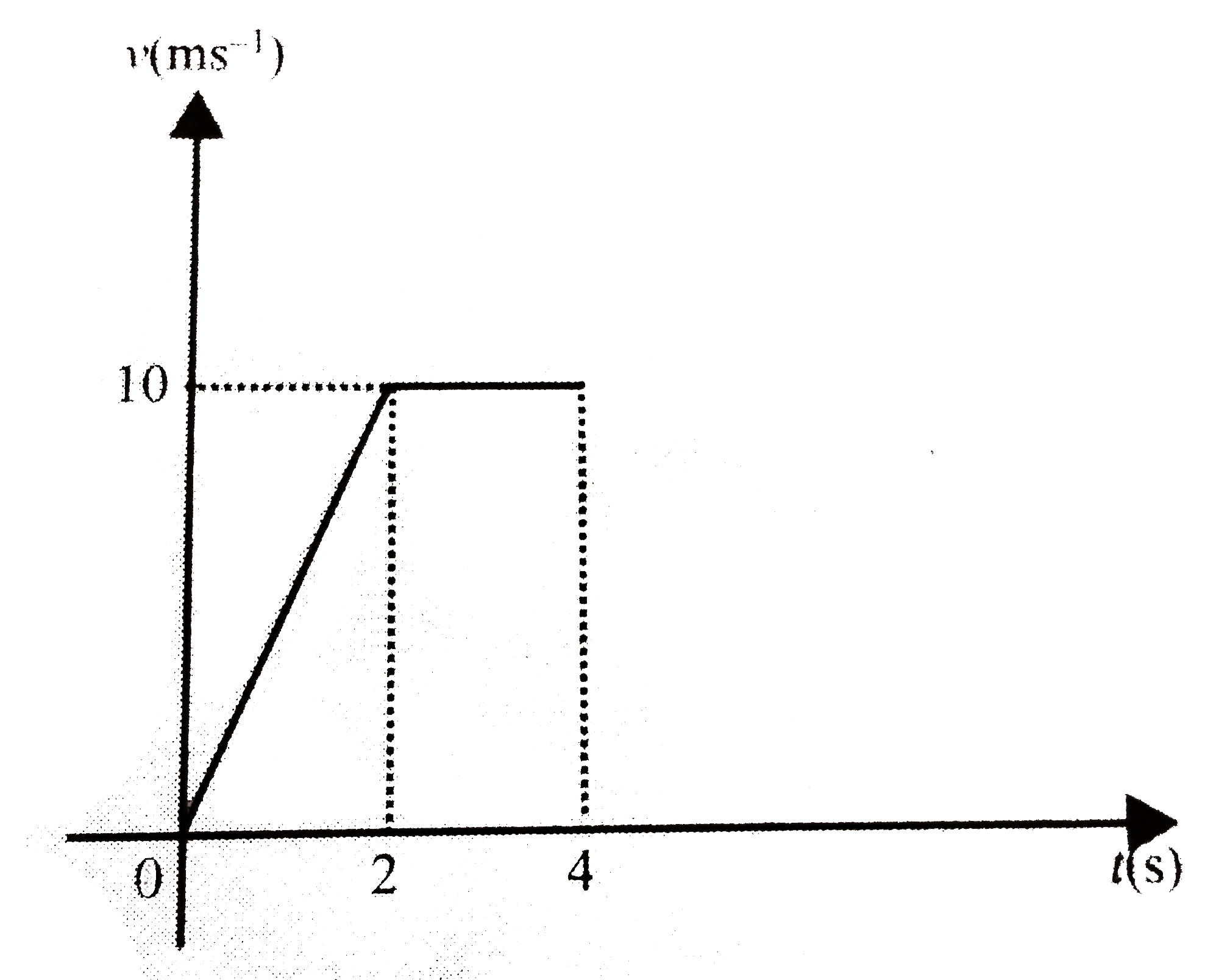A moving car possesses average velocities of 5ms−1,10ms−1, and 15ms−1, in the first, second, and third seconds, respecticely. What is the total destance coverd by the car in these 3s.?
15m
30
55m
None of these
The correct Answer is:B
To solve the problem, we need to calculate the total distance covered by the car in three seconds, given the average velocities for each second.
1. Identify the average velocities for each second:
- First second: v1=5m/s
- Second second: v2=10m/s
- Third second: v3=15m/s
2. Calculate the distance covered in each second:
- Distance covered in the first second (d1):
d1=v1×t1=5m/s×1s=5m
- Distance covered in the second second (d2):
d2=v2×t2=10m/s×1s=10m
- Distance covered in the third second (d3):
d3=v3×t3=15m/s×1s=15m
3. Sum the distances to find the total distance covered:
Total distance=d1+d2+d3=5m+10m+15m=30m
4. Conclusion:
The total distance covered by the car in 3 seconds is 30m.
Final Answer:
The total distance covered by the car in these 3 seconds is 30 meters.
---
- First second: v1=5m/s
- Second second: v2=10m/s
- Third second: v3=15m/s
- Distance covered in the first second (d1):
d1=v1×t1=5m/s×1s=5m
- Distance covered in the second second (d2):
d2=v2×t2=10m/s×1s=10m
- Distance covered in the third second (d3):
d3=v3×t3=15m/s×1s=15m
Total distance=d1+d2+d3=5m+10m+15m=30m
The total distance covered by the car in 3 seconds is 30m.
The total distance covered by the car in these 3 seconds is 30 meters.
Topper's Solved these Questions
- BOOK - CENGAGE PHYSICS ENGLISHCHAPTER - KINEMATICS-1EXERCISE - Graphical Concept17videos
KINEMATICS-1
- BOOK - CENGAGE PHYSICS ENGLISHCHAPTER - KINEMATICS-1EXERCISE - Graphical cancept1videos
KINEMATICS-1
- BOOK - CENGAGE PHYSICS ENGLISHCHAPTER - KINEMATICS-1EXERCISE - Subjective29videos
KINEMATICS-1
- BOOK - CENGAGE PHYSICS ENGLISHCHAPTER - GRAVITATIONEXERCISE - INTEGER_TYPE1videos
GRAVITATION
- BOOK - CENGAGE PHYSICS ENGLISHCHAPTER - KINEMATICS-2EXERCISE - Exercise Integer9videos
KINEMATICS-2
Similar Questions
The speed of a car increases uniformly from zero to 10ms−1 in 2s and then remains constant (figure)

a. Find the distance travelled by the car in the first two seconds.
b. Find the distance travelled by the car in the next two seconds.
c. Find the total distance travelled in 4s.View SolutionIf the r.m.s. velocity of 5.15ms−1 at 298 K, then a velocity of 10.30ms−1 will be possessed at a temperature
View Solution
Knowledge Check
- Question 1 - Select One
A car starts from rest, attain a velocity of 36kmh−1 with an acceleration of 0.2ms−2, travels 9 km with this uniform velocity and then comes to halt with a uniform deaceleration of 0.1 ms−2. The total time of travel of the car is
A1050 sB1000 sC950 sD900 s
The speed of six different molecules in a gas are 25ms−1,20ms−1,30ms−1,15ms−1,10ms−1 and 25ms−1. Calculate the average speed and also the root mean square of the gas.
View SolutionConsider a particle intially moving with a velocity of 5 m s−1 starts decelerating at a constant rate of 2 m s−2.
a. Determine the time at which the particle becomes stationary.
b. Find the distance travelled in the second second.
c. Find the distance travelled in the third second.View SolutionA car travels with a uniform velocity of 25 m s−1 for 5 s. The brakes are then applied and the car is uniformly retarded and comes to rest in further 10 s. Find : (i) the distance which the car travels before the brakes are applied, (ii) the retardation,and (iii) the distance travelled by the car after applying the brakes.
View SolutionA car A moves with velocit 20ms−1 and car B with velocity 15ms−1 as shown is. Find the relativety Bw.r.t.Aw.r.t.B.
 .View Solution
.View SolutionThe speed of a car is 72 km h−1 . Express it in m s1
View SolutionAn object moves 10 m in 4 s then turns left and moves 20 m in next 5 s. What is the average speed of the object?
View SolutionA car travels 40 km in the first hour, 45 km in the second hour, and 35 km in the third hour. Calculate the average speed of the vehicle in km/h and m/s.
View Solution

